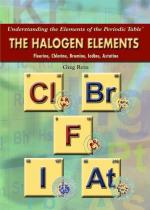|
This section contains 256 words (approx. 1 page at 300 words per page) |
Astatine is a member of the halogen family, the elements that make up Group 17 of the periodic table. Its atomic number is 85, its atomic mass is 209.9871, and its chemical symbol is At.
Properties
All isotopes of astatine are radioactive. They have such short half lives that it has been difficult to determine the element's properties. No melting point, boiling point, or density data are available for the element. Experiments that have been conducted on the element show that its chemical properties are similar to those of the other halogens in Group 17.
Occurrence and Extraction
Astatine is a very rare element. Scientists estimate that no more than about 25 grams of the element exist on the Earth's surface. Astatine can also be prepared artificially in particle accelerators, although no more than about a millionth of a gram has been produced by that method so far.
Discovery and Naming
Astatine was one of the last of the naturally occurring elements to be discovered. It was found in 1940 by three chemists working at the University of California, Dale R. Corson, Kenneth R. Mackenzie, and Emilio Segrè (1905-89). The element was named after the Greek word for "unstable," which is astatos.
Uses
Astatine is too rare to have any practical uses. Even its use in research is very limited because of its scarcity.
Health Issues
There is evidence that astatine behaves like iodine in the body. That is, it tends to concentrate in the thyroid gland. If that fact is true, one possible future use for astatine is the treatment of thyroid disorders.
|
This section contains 256 words (approx. 1 page at 300 words per page) |


